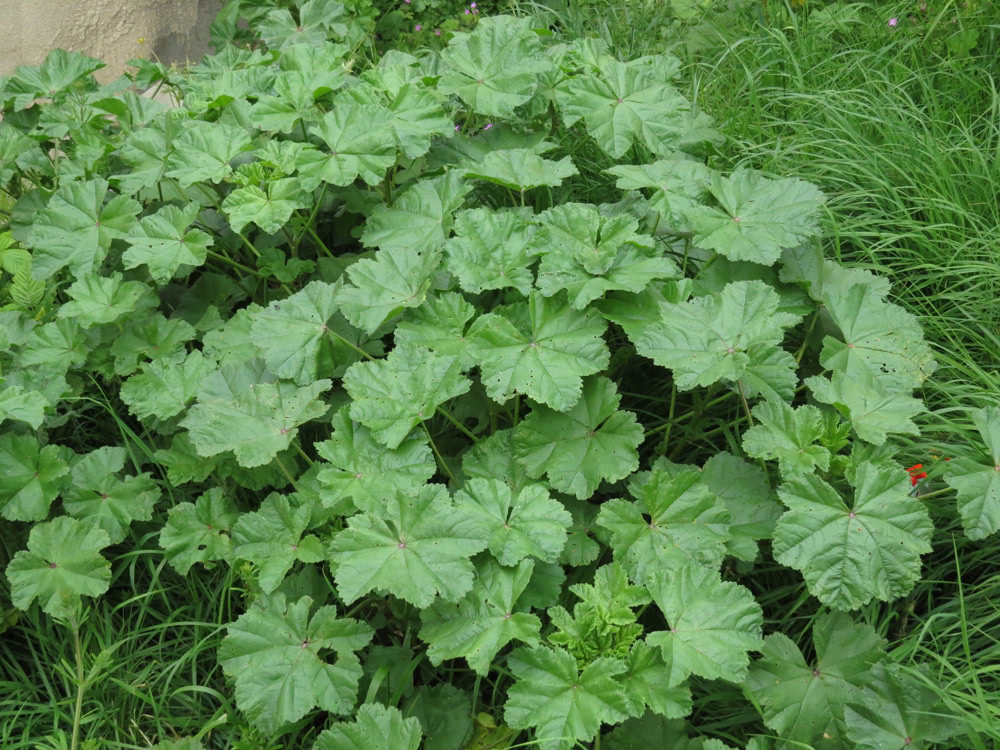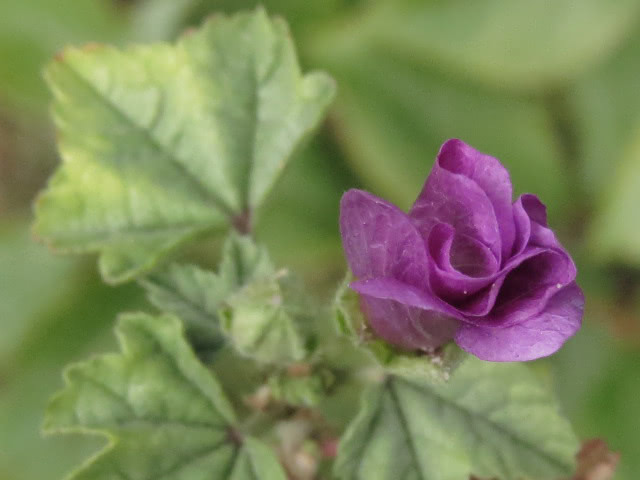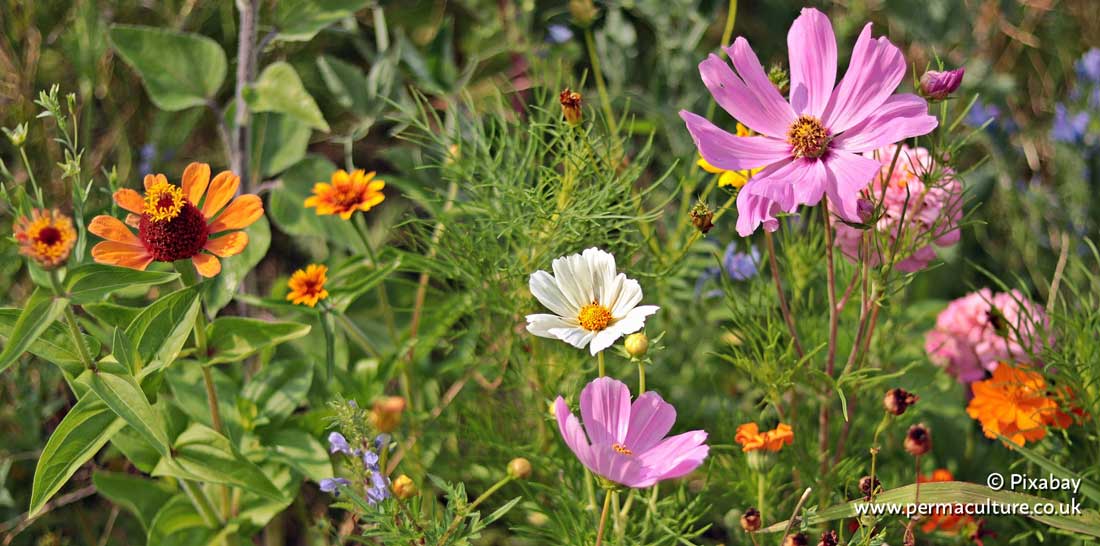Some plants seem to be our constant companions, no matter where we live. Often, they will also be some of our really useful species. It will soon become clear that the common mallow (Malva sylvestris) is one of these plants.
Rather than being looked upon as a weed, the mallows can be more usefully described as some of our gloriously abundant plant helpers. A number of mallow species have long been used as a food and medicine, wherever they are found native, and especially in the Middle East and Asia. You won’t have far to go to find the common mallow in most parts of Europe, North Africa and Southwest Asia either.
Common mallow can be found growing erect or prostrate, which may initially cause confusion because it’s easy to assume they might be two different species.
Mallow’s kidney-shaped or palmately-lobed leaves are notably creased, typically with dentate margins. The leaves often show a purple spot in the centre of the base of the leaf and this can also be seen to run down the petiole on some specimens. On other specimens, the purple spotting and colouring is completely absent. Mallow leaves have long petioles. Their deep green foliage hints at a renowned drought tolerance.
During flowering, the leaves appear alternately on the stems. Holding a leaf relays the surface coarseness. But tear and crush one, and you discover a family pattern – the mucilage. You will soon experience a slimy and tacky feel between your fingers. All parts of the plant contain mucilage.
In bloom, the Malvaceae family plants produce five large notched petals in each open flower. Common mallow has showy pink petals laced with darker-coloured strokes. In the centre of the flower lies a pollen-loaded column of fused stamens. This surrounds the stigma, which rises above the column.
Mallow is known to freely seed. The round seed pods, known as ‘cheeses’, soon follow flowering. These were once munched by children on their way to and from school. The pods are held on stalks, close to the flowering stem.

Mallow will be found on most soils, from coastal to marginally upland habitats, with most settings being adequate for this resilient plant. It loves waste-ground as well as grassland; gravel as much as coastal edges, and waysides and roadsides as well as hedges.
Leaves, flowers, seed pods, roots.

Leaves, in spring; flowers from late spring; seed pods from early summer. Roots could be harvested from larger rosettes whenever large enough.
Medicinal and nutritional constituents
Vitamins A,B,C,E; inulin; mucilage; phenols; flavonoids; essential fatty acids; fibre; calcium; magnesium; zinc; selenium; potassium.
Traditional and contemporary uses
As with many wild food plants, the common mallow has also had a long history of medicinal use. Due to its high mucilage content, mallows make excellent soothing demulcent herbs, especially for cases of inflammation, either for the urinary, digestive or respiratory systems.
Pregnant women or new mothers may like to know that mallow leaves can provide useful amounts of iron, as well as being quite high in zinc and most vitamins.
All of the mallow family with exception to the cotton plant (Gossypium hirsutum), are reportedly edible. With their high mucilage content, the leaves can usefully be taken as an emergency antidote to irritation or burning that may be caused by the accidental consumption of acrid plants in the buttercup family.
Creative cooks can substitute mallow for spinach in many dishes, including soups, salads, gnocchi and quiche. I have even flash-fried larger mallow leaves for just one second in hot oil to make ‘popadoms’. Mallow also makes a great addition to soups, whereby the mucilage helps to thicken them.
In Jewish culture, mallow has been been considered the ‘most important plant in local gather society’. Every spring mallow is gathered in the countryside. Its common name in both Hebrew and Arabic, translates to ‘bread’.
During the war of 1948, when Jerusalem was under siege, mallow was an important famine crop, and one that is still celebrated on Independence day every year with a traditional dish made from mallow leaves.
Common mallow can be substituted for the family relative Corchorus olitorius aka ‘jutes mallow’, when making the Egyptian / Middle-Eastern dish ‘Molokhia’. This traditional dish is usually served with chicken.
In China, mallow roots are a popular and a common ingredient in making hearty, yet medicinally potent soups and broths. The inulin-rich tap roots of a number of different mallow species, including common mallow, have been used.
The seed pods can be substituted for most of the egg white if wanting to make mallow meringues. Simply boil up the peeled seed pods using 3 parts water 1 part seed pods, and reduce the liquid by half. For every half cup of liquid add one egg white, ¼ tsp of cream of tartar, some vanilla and castor sugar, then whip it up until foamy and stiff, just like meringues.
Chris Hope, aka Chris Phyto, was a knowledgeable and enthusiastic plant lover, forager and teacher, who sadly died in 2021.










